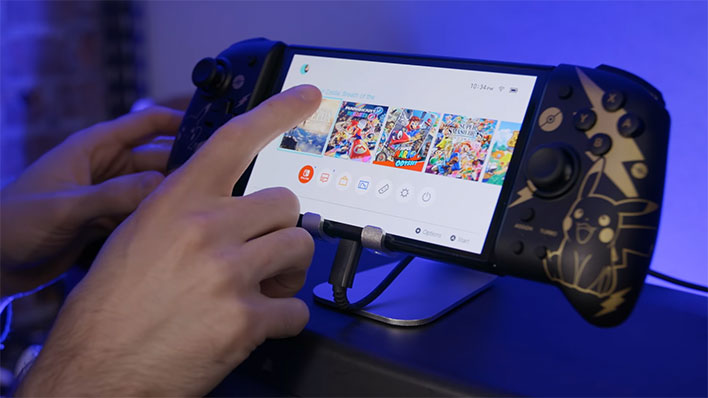Nintendo Switch OLED Burn-In Torture Test Lights Up Screen For 3,600 Hours, Here's The Result

Do OLED screens get a bad rap when it comes in to the risk of permanent burn-in? It's an important question as OLED displays have come to dominate landscape for premium mobile devices, from high-end smartphones to the latest iteration of the Switch. As it applies specifically to the Nintendo Switch OLED, a recent torture test suggests that burn-in isn't something most gamers should worry about.
Burn-in is when part of an image gets permanently ingrained into a display. This can happen when static images like the elements of a game HUD or a television channel logo are displayed for long periods of time, eventually resulting in a sort of ghost-like appearance. It's typically observed with brighter images, which can wear down pixels in an OLED display more quickly than less luminous images.
Various technologies exist to mitigate burn-in (like slightly moving images), so when it comes to the Switch OLED, how susceptible is it to this unwanted phenomenon? YouTube channel Wulff Den decided to find out...
While there are different ways to test this, the method he chose was to plug his Switch OLED into a charger, crank the brightness up, and display a static image from The Legend of Zelda: Breath of the Wild. He also configured a Hori Split Pad Pro ($59.99 on Amazon) to auto-fire a shoulder button, so that the Switch wouldn't dim after five minutes of inactivity.
The scene he chose was inside the Shrine with its bright ceiling and light spilling through from the sky. Link would also be safe from enemies, and there's no day/night cycle. After 1,800 hours of this test, there was no burn-in, as he observed in a video posted last month. He kept the test going, and in the video above he finally observes some mild burn-in after 3,600 hours of testing.
His goal is to continue the test until the Switch is no longer playable because of too much burn-in, and it appears that will take a very long time.
"Is this something you should worry about? Definitely not," Wulff Den narrates. "If you're playing a game that has specific UI elements that are on the screen for a really long time, in portable mode, at full blast, maybe eventually you might run into a problem. But again, this took me 3,600 hours to get to this point and it's been on this screen the whole time, at full blast. That would take somebody years to do in one particular game."
Even then, that game would need a UI element or something that is static, based on his testing. So there you have it—according to this particular test, OLED burn-in is not much of a concern.

